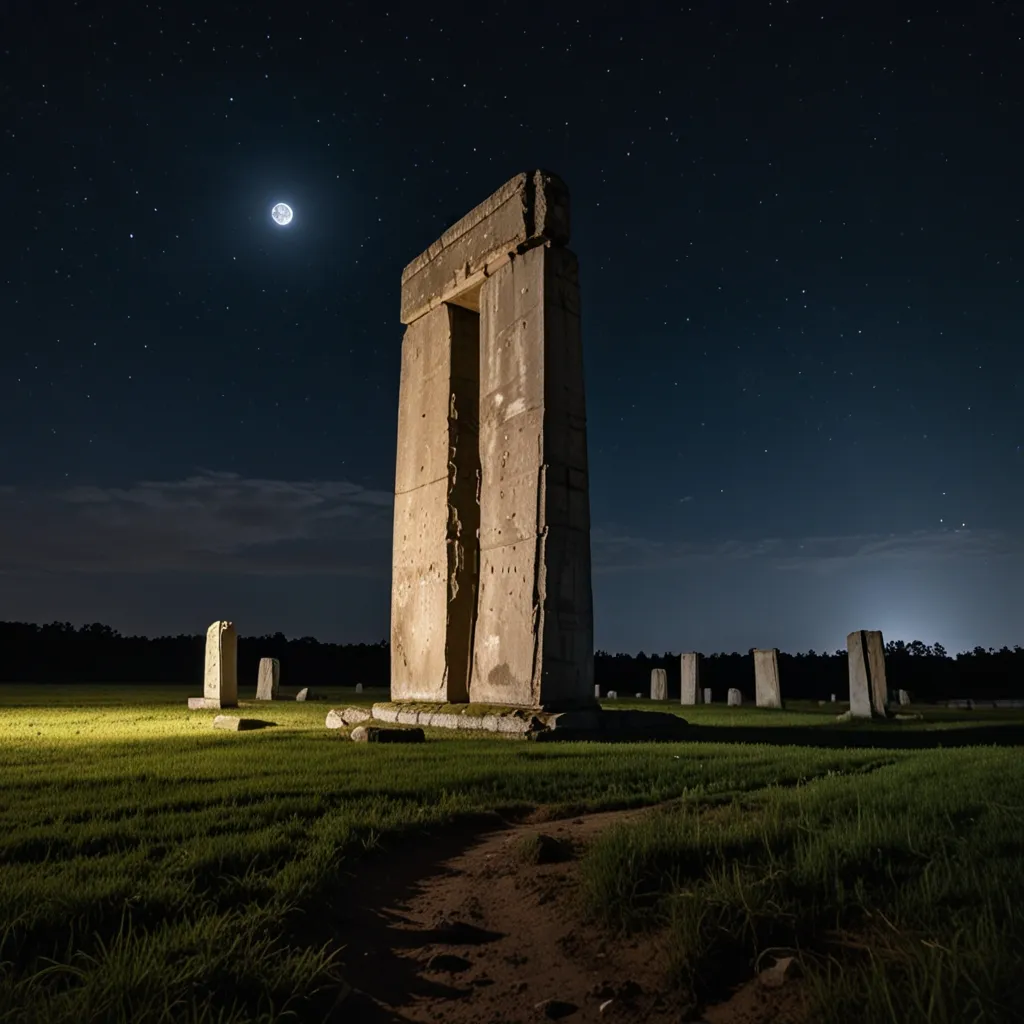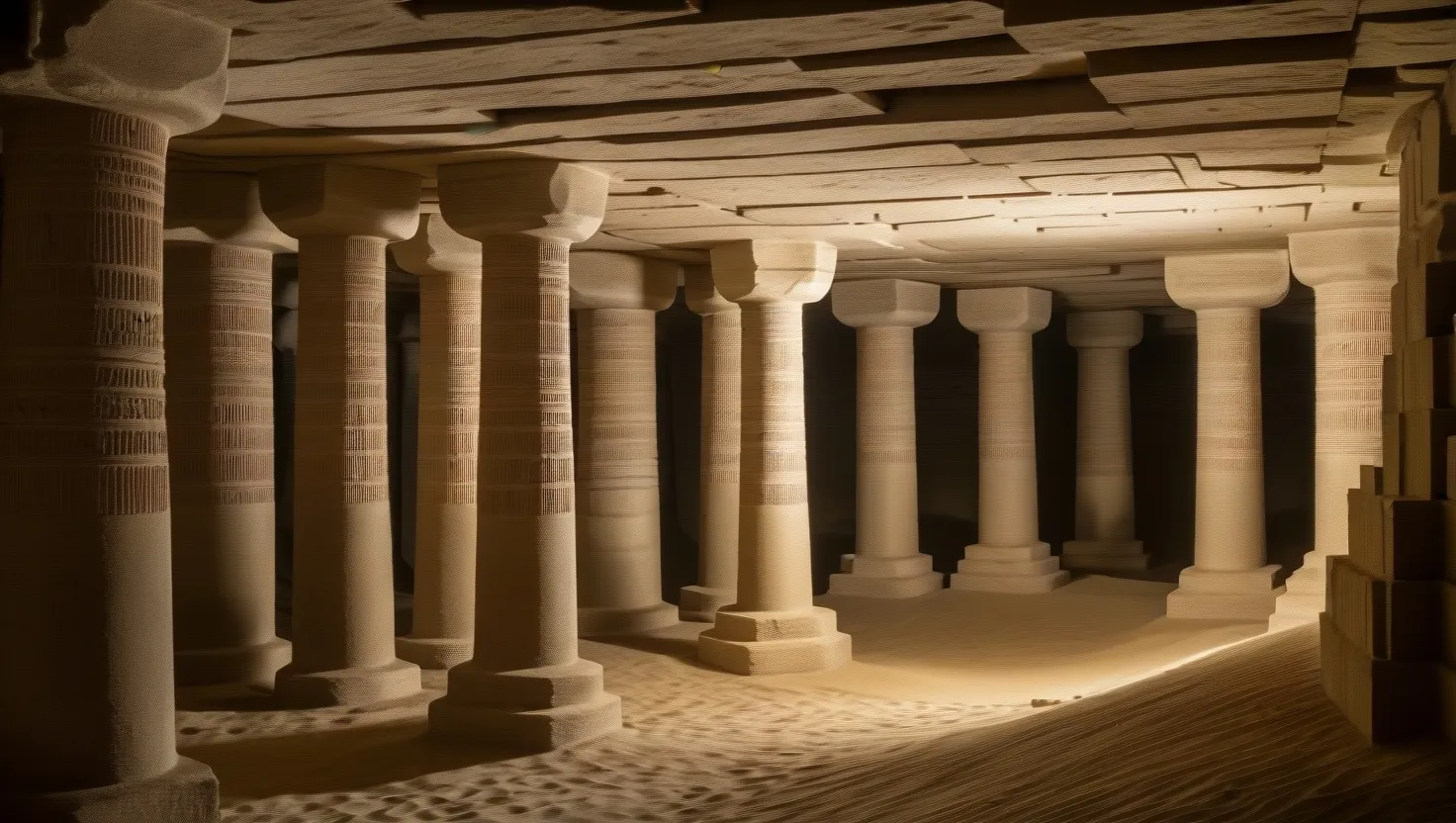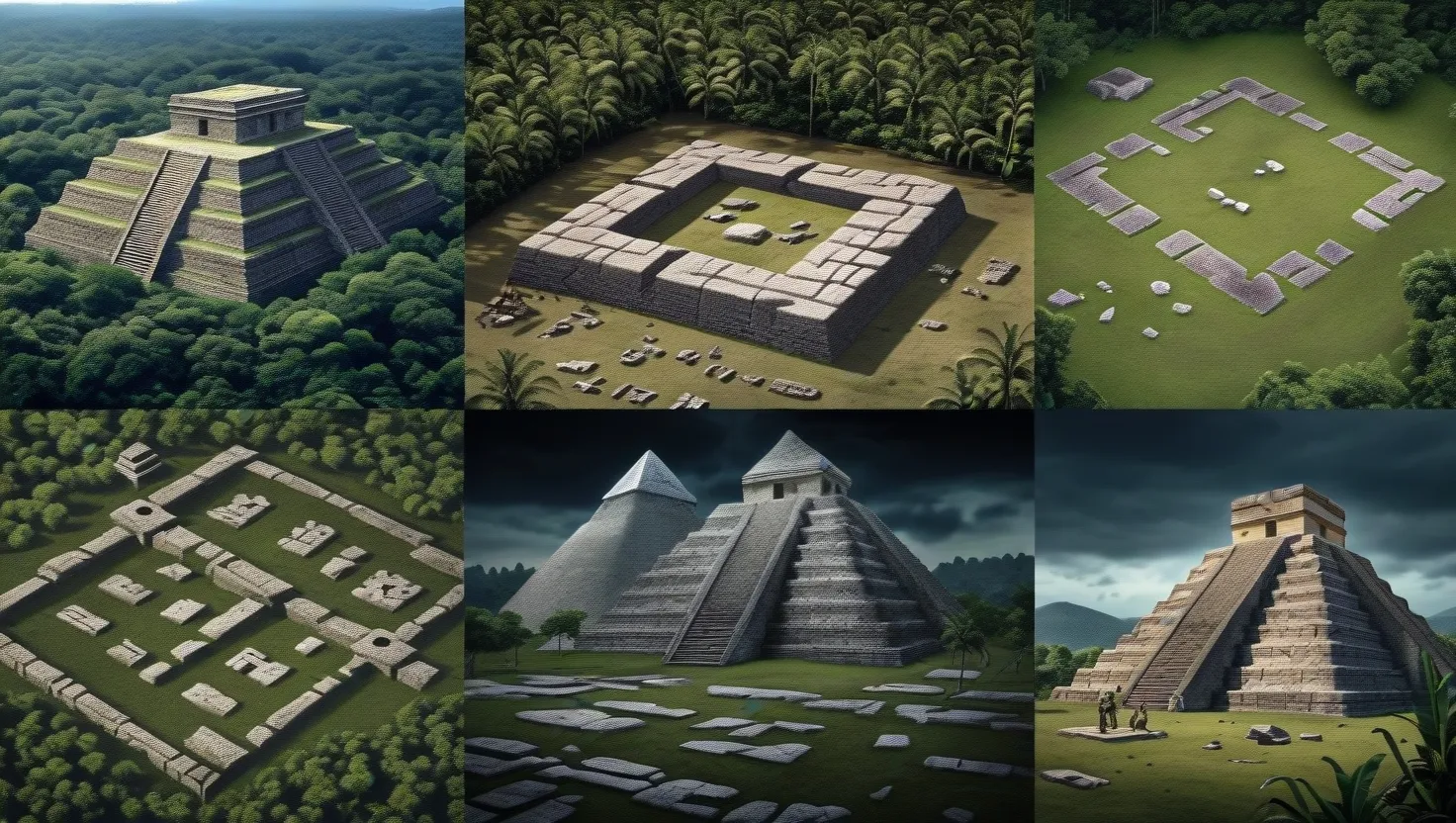So let me spin the tale of the Georgia Guidestones, almost like weaving a yarn over a campfire. Picture it: a crisp July morning in Elberton, Georgia, 2022. Out of nowhere, an explosion rocks a secluded piece of farmland. And just like that, a mysterious monument that’s been standing for over 40 years is reduced to rubble. This wasn’t just any monument; these were the Georgia Guidestones—four mammoth granite slabs, a whopping 230,000 pounds in total, etched with commandments for a peaceful society. But who put them there? And why the mystery?
Let’s roll back to June 1979. A polished gent by the name “Robert C. Christian” strolls into the office of Joe Finley, the president of Elberton Granite Finishing Company. Christian, as it turns out, isn’t even his real name—he’s keeping things hush-hush. This man’s mission? To erect a monolithic structure to rival Stonehenge. And not just any structure, but one that serves as a moral guide.
Christian drops some serious cash on the table and presents intricate plans: a cross-shaped arrangement of giant stones, decked out with messages in eight living and four dead languages. Each stone wasn’t just a rock; it was a celestial instrument, tracking the sun and stars. Talk about shooting for the moon! Joe Finley, thinking this was all some elaborate joke, threw out a sky-high price. But Christian? Totally unfazed. Dude was serious.
After some back-and-forth, Christian sets up an account with the help of banker Wyatt Martin. And here’s the kicker: Martin would be the only soul to know Christian’s true identity. Next minute, Christian buys a site, construction kicks off, and then poof—he vanishes.
Flash forward to March 22, 1980, the vernal equinox. On a five-acre plot, the Georgia Guidestones are unveiled. Local fans and media flock to see this towering structure—each stone stands 16 feet tall, six feet wide, 19 inches thick. The inscriptions? New commandments for humanity. Things like:
- Keep the global population under 500 million.
- Guide reproduction wisely with fitness and diversity.
- Unite humanity with a new living language.
- Resolve disputes in a world court.
- Balance personal rights with social duties.
Sound harmless at first, right? But dive deeper, and the undertones get a little spooky. Population under 500 million? We’re at 8 billion now. Who’s getting the boot?
As it turns out, Christian (real name: Dr. Herbert Hinzie Kirsten) wasn’t just some random philanthropist. He was a dyed-in-the-wool eugenicist, mingling with the likes of William Shockley, a Nobel Laureate with, uh, less-than-wholesome beliefs about race and intelligence. These guys were serious about “improving” humanity.
The whole setup reeks of a grand plan for social engineering, eugenics, and even a one-world government. Think tanks like the Club of Rome have been on about population control for decades. Remember those secretive Bilderberg meetings? Some folks believe they’re plotting, among other things, to cull the population through manufactured pandemics. Sure, it sounds straight out of a conspiracy novel, but the fear is real.
When the Guidestones went up, they attracted all sorts—tourists, conspiracy theorists, and even satanic worshippers, some claim. Over the years, eerie stories surfaced about rituals and odd happenings around the stones. A mystical aura enveloped the place.
Fast forward to that fateful day in 2022. Boom. A lone vandal plants an explosive, blows up a part of this enigmatic monument, and high-tails it out of there within a minute. What’s fishy? Authorities cleaned up the site super quick, almost like they had the equipment ready to roll. Who was this midnight marauder? Some anti-government rebel?
The knee-jerk cleanup, the FBI’s immediate response—all raise eyebrows. Why the rush? Could it be that the message of the Guidestones—population control, eugenics, one-world governance—hit too close to home, especially in today’s climate of political tension and global pandemics?
Discussions about population control aren’t new. The Rockefeller Foundation, for instance, has long funded research in that area. But here’s the kicker: many who preach about the dangers of overpopulation are the same folks who benefited the most from it. The hypocrisy is glaring. JD Rockefeller made his fortune off oil, Aurelio Peccei’s wealth stemmed from the automobile industry, which, let’s face it, wasn’t exactly eco-friendly. They got their billions, now they want to limit us?
So, while the destruction of the Guidestones might seem vandalous, it’s also a brazen commentary on this hypocrisy. The rich and powerful dictating terms on population while enjoying their luxuries doesn’t sit well with everyone. Maybe, just maybe, the Guidestones were a symbol that some folks felt needed to be demolished.
The world moves forward through collective cooperation and innovation, not by top-down control from a self-anointed elite. The Georgia Guidestones, shrouded in mystery and controversy, underscored this tension. And though their destruction was illegal and extreme, it also marked the end of a controversial chapter in modern history.
So, what do we take away from this saga? In a world teetering on the brink of both technological marvels and socio-political strife, it’s a vivid reminder that transparency and genuine mutual respect are non-negotiable. No stone tablets can dictate our shared future. We lay those foundations ourselves. Through dialogue, not diktats. Through inclusivity, not elitism. The fate of the Georgia Guidestones is a testament to that evolving consciousness.






